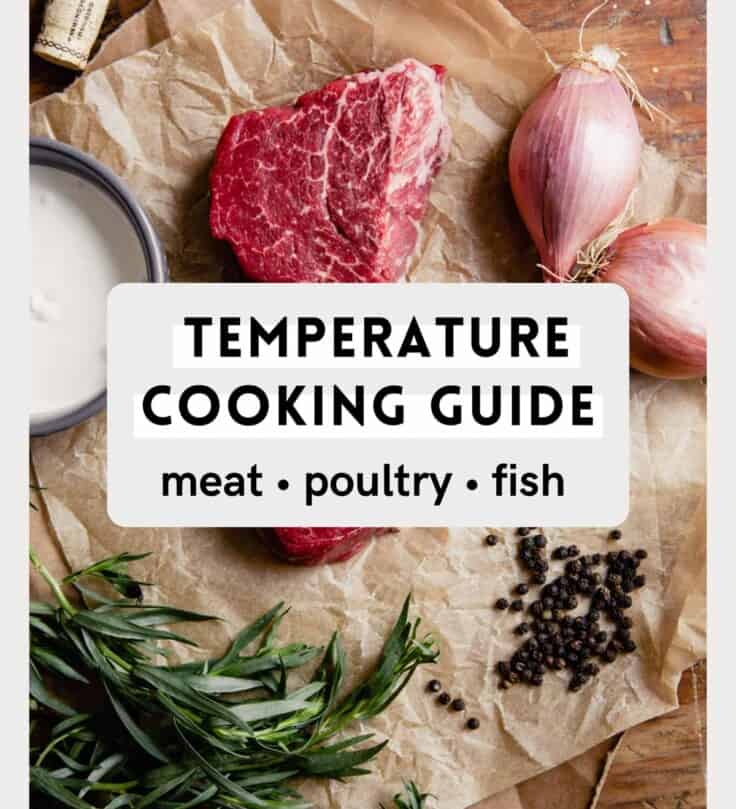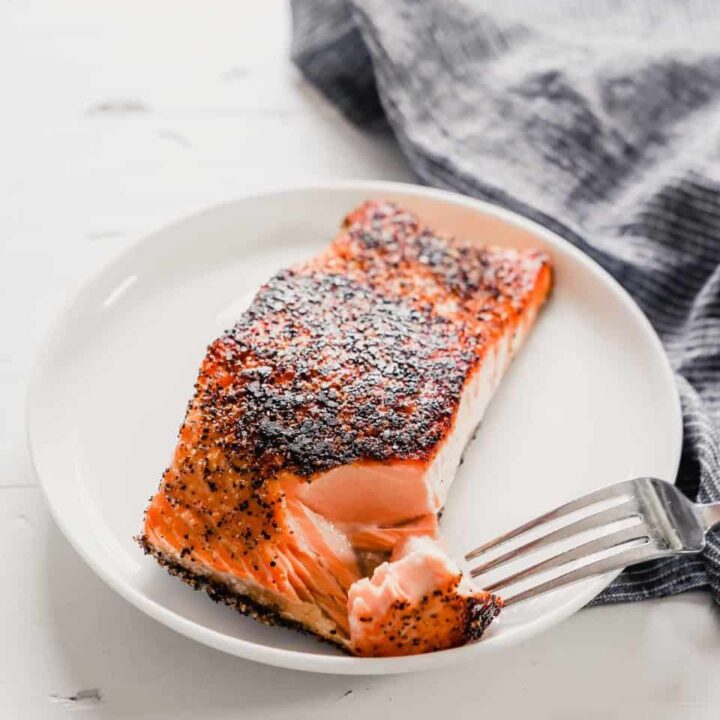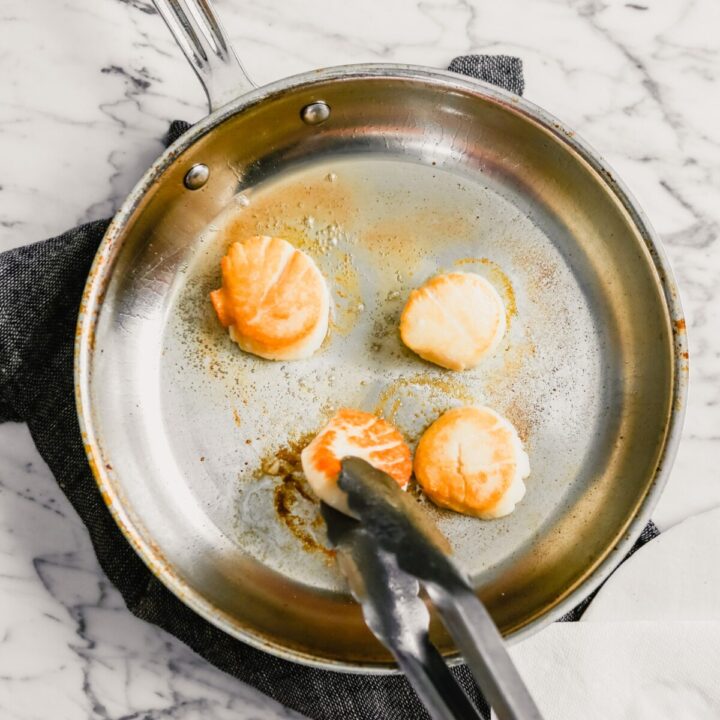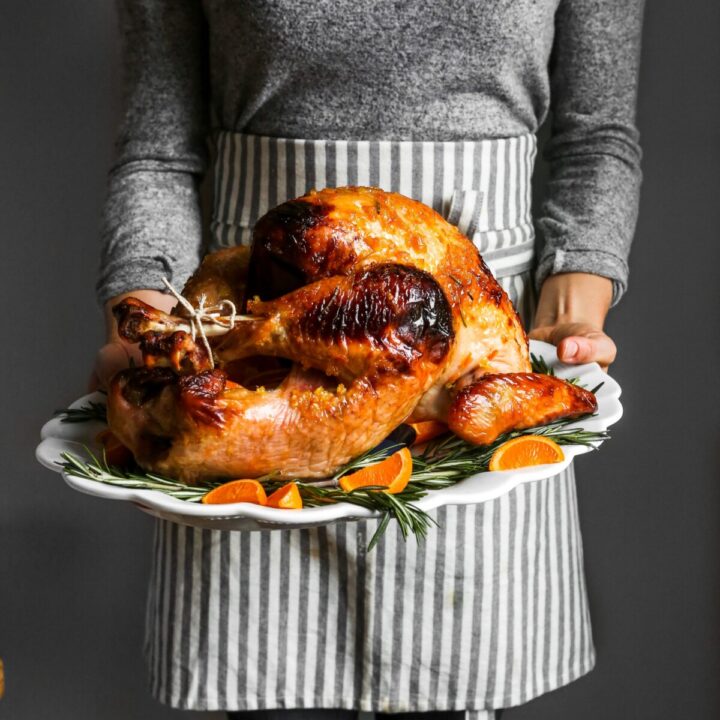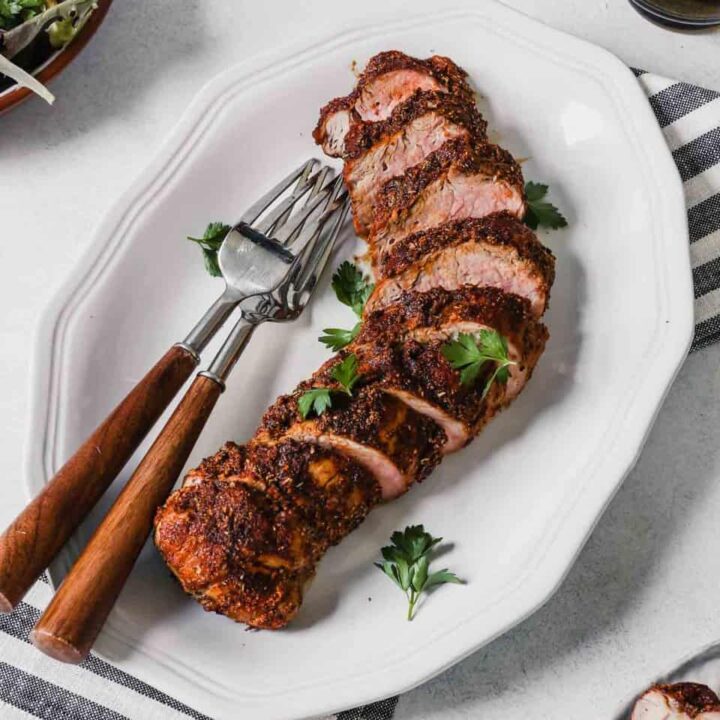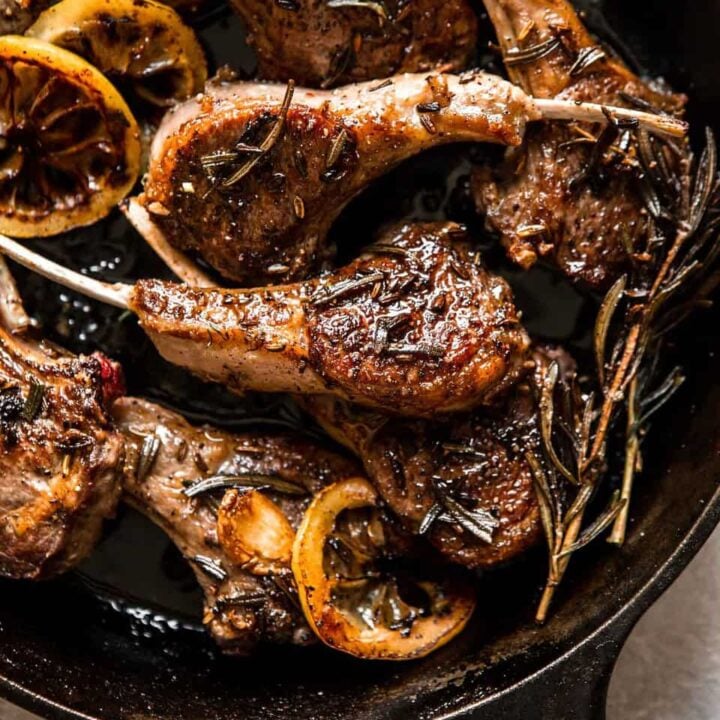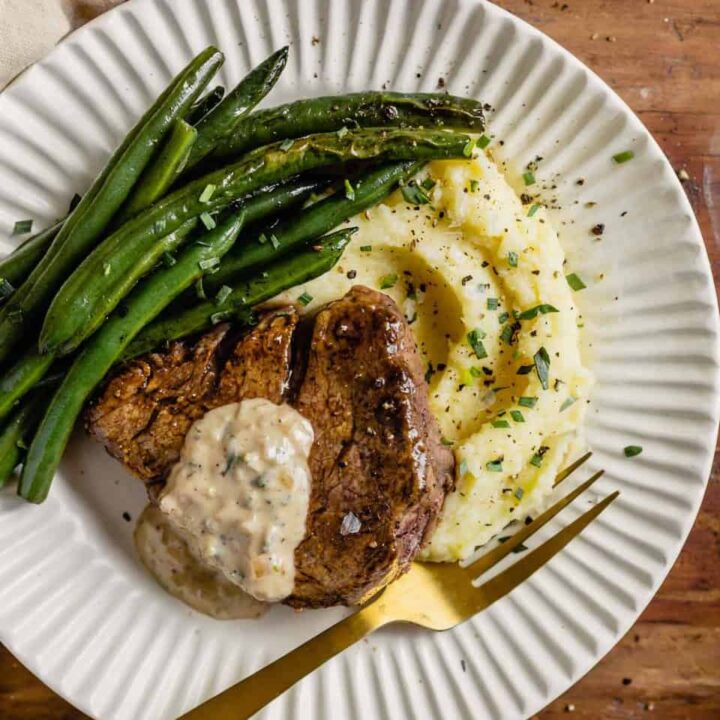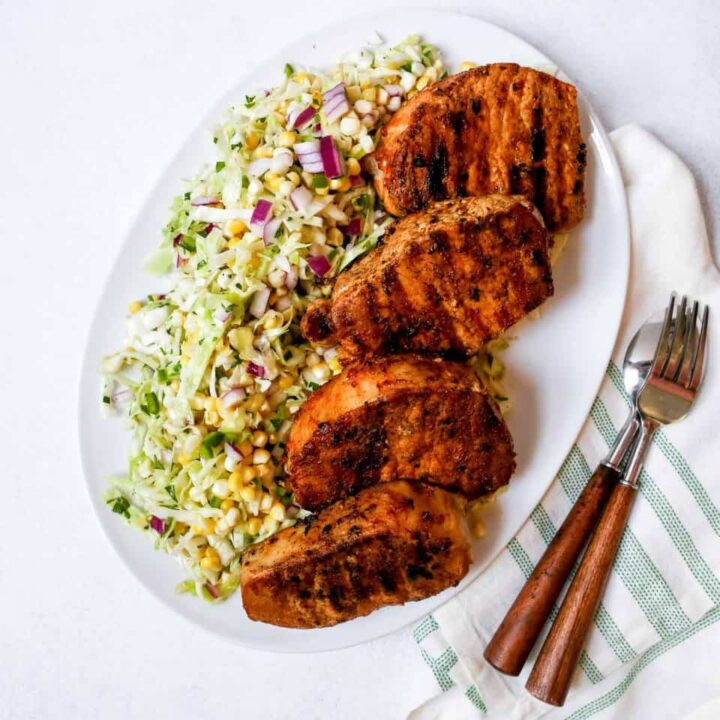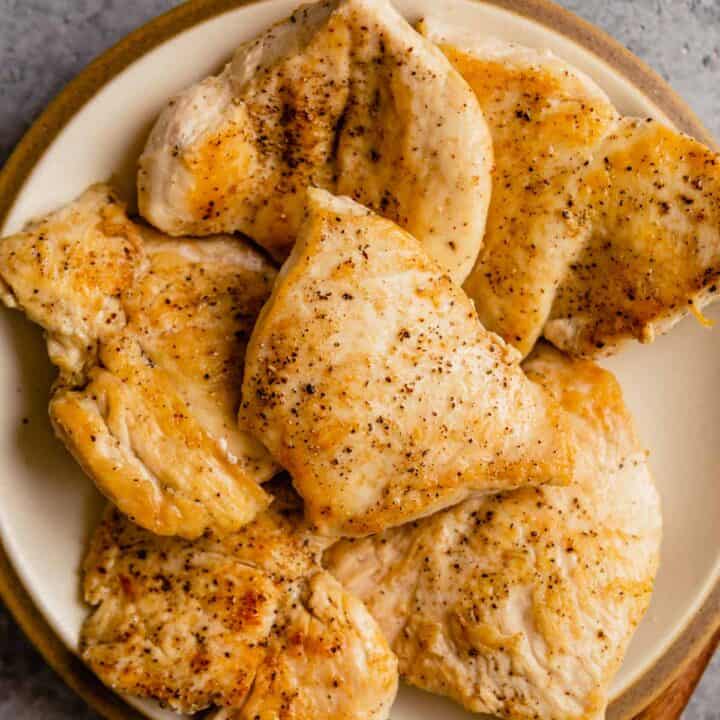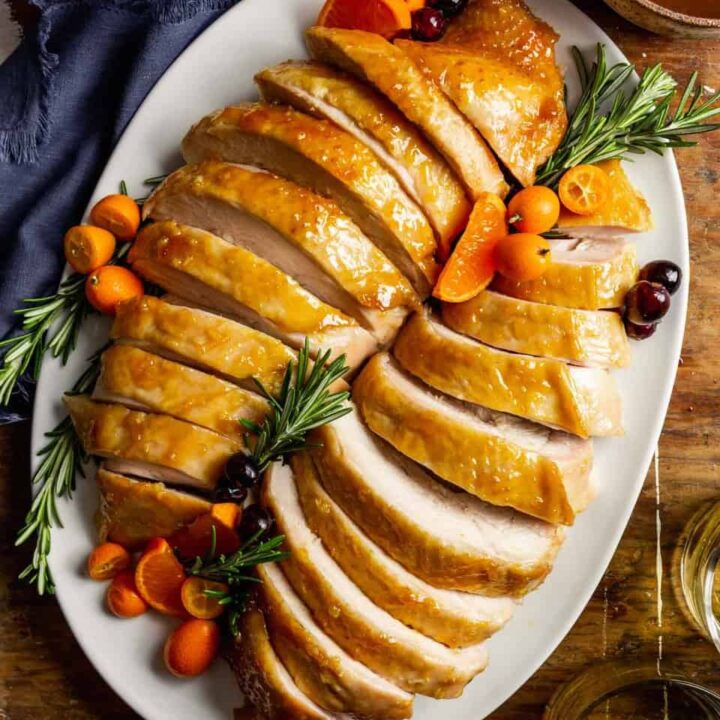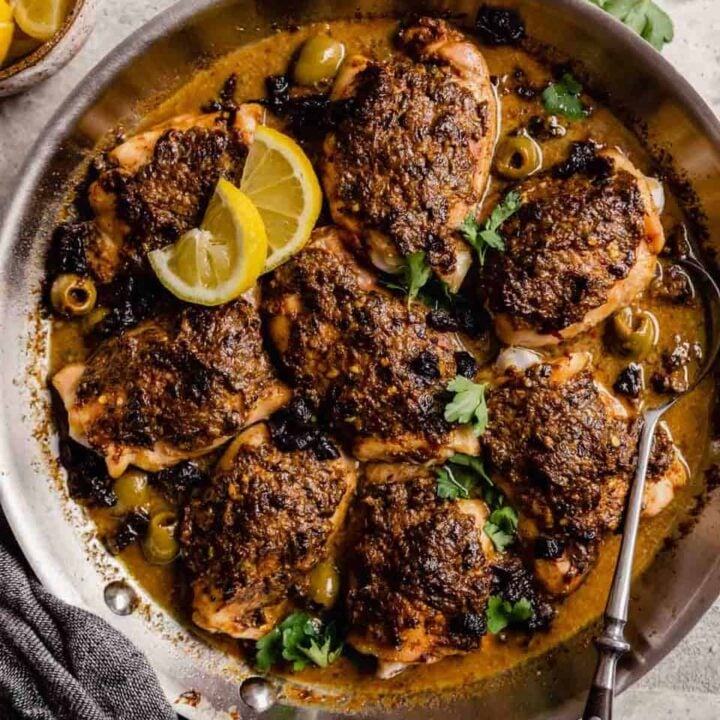The ultimate internal temperature cooking guide for meat, poultry, and fish. Learn the essential tools needed, how to use them and how to safely cook protein that’s delicious, moist and perfect every time!
Table of Contents
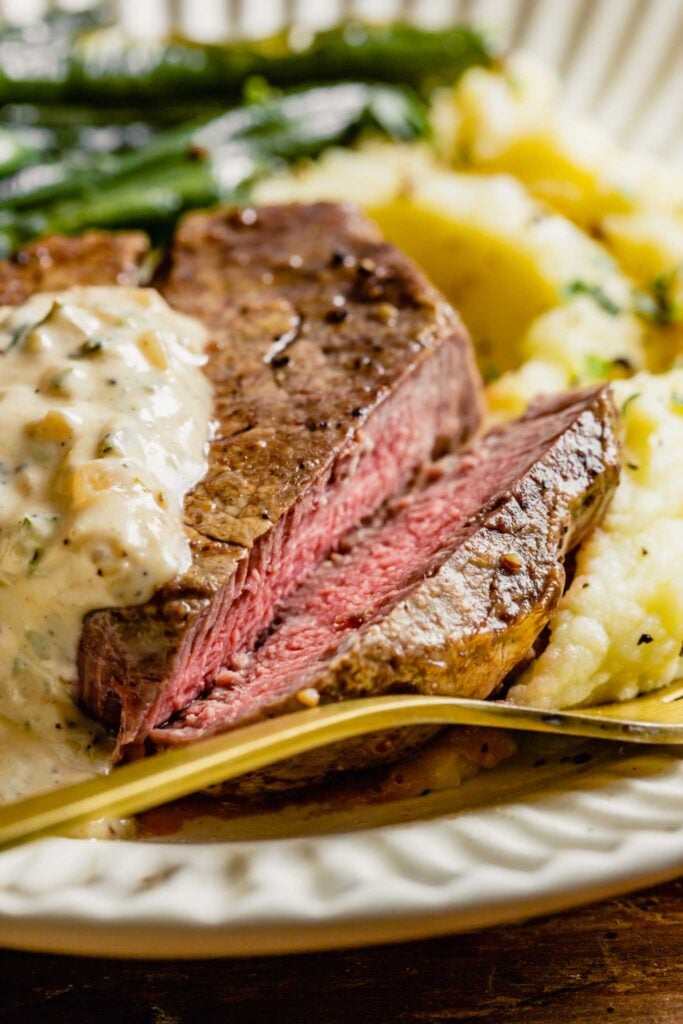
Here in the Midwest, meat is a must. You’ll find it very few and far between where the main entree isn’t consisting of some kind of red meat or at least poultry. However, the problem I run into time and time again is either grossly undercooked or overcooked meats (to the point of no return).
The solution? Don’t use time as the rule when cooking meat. Instead, use time as a guide and use temperature as a rule. Cooking times vary, but temperature never lies (unless your thermometer is in severe need of recalibration).
Cooking meat by internal temperature instead of time guarantees a safe to eat, perfectly cooked, tender piece of meat even if your grill runs hot or your oven runs cool. Cooking by internal temperature takes all of the guesswork out of cooking your meals.
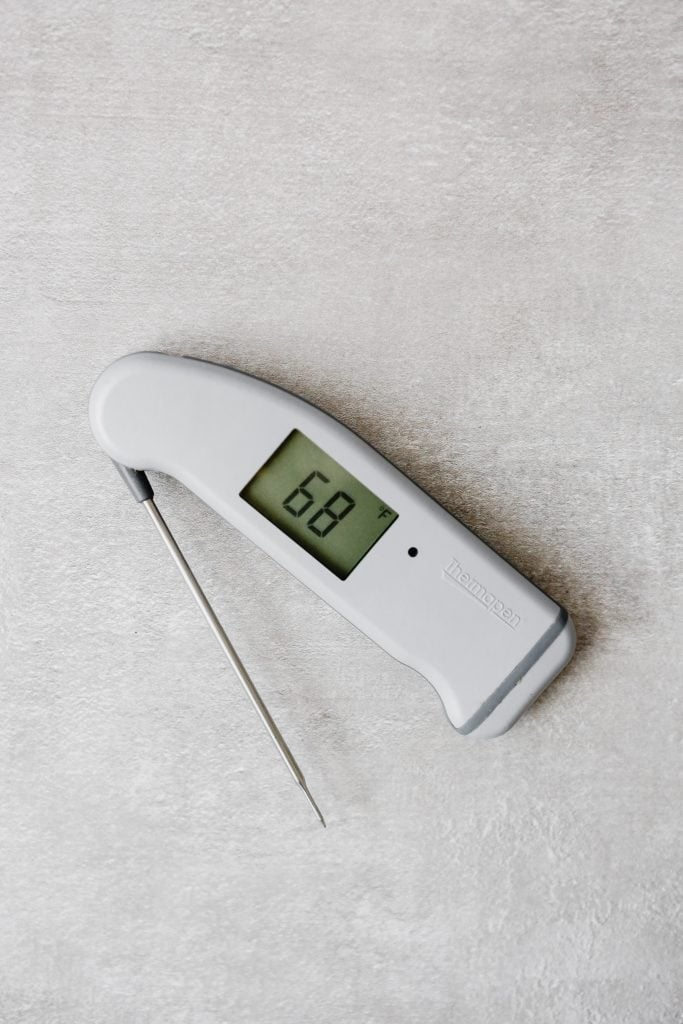
Instant-Read or Digital Thermometers
Instant read thermometers are a MUST in cooking and although a quality one can be a bit of an investment, it’s a one-time purchase you’ll never have to make again—it’s well worth it. Here at ZK we recommend the Thermapan Mk4 or the more economical ThermoPop, both are fabulous digital thermometers.
Check out our article on how to use your instant-read thermometer! You’ll learn how to insert the thermometer probe correctly, which is essential for getting an accurate temperature reading.
Read all about kitchen gear in our article for the 15 Essential Kitchen Gadgets and Equipment for Every Cook.
Safe Internal Temperature Cooking Guide
Chicken & Turkey
- Light meat: 160–165ºF (71–73ºC)
- Dark meat: 175ºF (79ºC)
Pork
- Medium: 140–145ºF (60–63ºC)
145–150ºF (63–65ºC) after resting - Well-done: 150–155ºF (65–68ºC)
155–160ºF (68–71ºC) after resting
Beef, Veal & Lamb
- Rare: 115–120ºF (46–49ºC)
120–125ºF (49–52ºC) after resting - Medium-rare: 120–125ºF (49–52ºC)
125–130ºF (52–54ºC) after resting - Medium: 130–135ºF (54–57ºC)
135–140ºF (57–60ºC) after resting - Medium-well: 140–145ºF (60–63ºC) (recommended USDA temperature)
145–150ºF (63–65ºC) after resting - Well-done: 150–155ºF (65–68ºC)
155–160ºF (68–71ºC) after resting
Ground Meat & Sausage
(such as ground beef, ground pork, ground chicken and ground turkey)
- 160ºF (71ºC)
Fish & Seafood
- Rare (tuna or swordfish only): 110ºF (43ºC)
- Medium-rare (tuna, swordfish, salmon): 120–125ºF (48–52ºC)
- Medium (salmon and white-fleshed fish like tilapia, cod, halibut, sea bass): 140–145ºF (60–65ºC)
A Note on Internal Cooking Temperatures
These temperatures are what we recommend when cooking meat, poultry and fish. There are, however, some exceptions that should be noted.
Carry Over Cooking
- Beef, pork, or lamb should be removed from the heating element when it temps 5–10 degrees BELOW your desired doneness. Dense meat retains heat better, which causes internal temperatures to continue to rise as it rests off-heat.
This is called carry over cooking, so if you want your meal to come off the grill, pan, or oven just the way you like it, give it a short rest and pay attention to the temp!
The above temperatures take into consideration your health, safety and enjoyment. We’ve found these degrees (from experience) are the ideal safe temperature—great meaty results that are safe and delicious. You can always cook for a little longer if you prefer your meals especially well-done.
Meat Temperature Chart
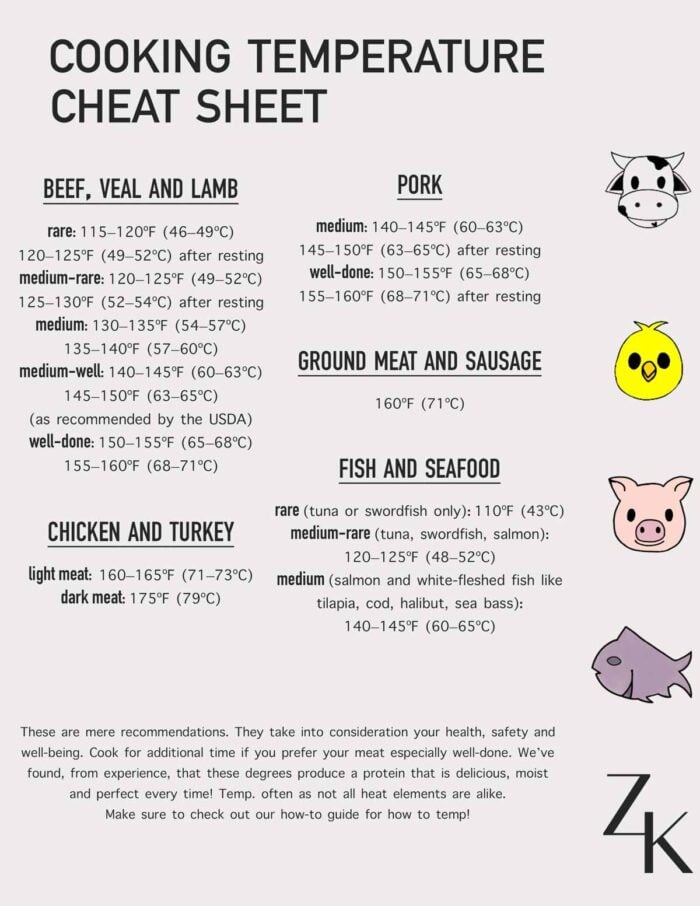
Print off our meat cooking temperatures cheat sheet and post it to your fridge for easy access any time!
The Importance of Resting
As instructed with pork, beef, veal and lamb, it’s important to allow a resting period between your cooking temperatures. This will vary depending on a number of factors, including the density, size and even the “juiciness” of your meat.
Allowing your meat to rest keeps the juices absorbed in the meat and helps to avoid overcooking! Keep in mind, the lower the cooking temperature, the less resting time it will need. As a general rule of thumb, any thicker slices of meat should rest for at least 10–15 minutes, but you can let it rest longer without any worry.
Use Your Meat Thermometer in these Meaty Recipes
The key to perfecting all of these meat, poultry and fish recipes? Using internal temperature as a guide, NOT just times!
How to Make Perfect Pan-Seared Salmon
With one-pan, three ingredients and 15-minutes’ time, you’ll have the best Pan-Seared Salmon there ever was! Crispy on the outside and deliciously moist on the inside, this salmon can’t be beat. Make it a meal with our recipe for Pesto Salmon & Pasta.
How to Pan-Sear Scallops
The key to perfectly Pan-Seared Scallops lies in five essential, yet very simple, steps. First off, buying good scallops is a must and when you check out this guide, you’ll know exactly what to look for! When you’ve finished searing your scallops, check out this recipe to use them for Green Coconut Curry with Seared Scallops & Broccolini.
Rosemary & Orange Glazed Roast Turkey
The last thing you want to happen at your holiday gatherings is a dry or tough turkey. To prevent this from becoming a problem, check out our video tutorial for How to Brine and Roast a Whole Turkey. Next work your way back to the blog to give your traditional turkey a much-needed upgrade with this recipe for Rosemary & Orange Glazed Roast Turkey.
How to Roast Pork Tenderloin
While there’s a slew of ways to prepare pork tenderloin, our all-time favorite is to roast. You can serve Roasted Pork Tenderloin with a creamy horseradish sauce, an oil-based herb sauce, or even in a pot roast, so knowing how to roast is essential and this recipe will act as your guide!
How to Pan-Fry Lamb Chops
The process of Pan-Frying Lamb Chops couldn’t be simpler! In just 15-minutes you can whip up a batch of fresh pan-fried lamb chops which is wayyyy quicker than it takes to make most sides. With just a cast iron skillet and a handful of spices, you're good to go and dinner will be served in no time.
How to Pan-Sear Filet Mignon
While the process is quick and easy, the result is a restaurant-worthy melt-in-your-mouth steak. Pan-searing is one of the best and easiest ways to create a masterpiece of filet mignon! In less than 45 minutes, you can serve perfectly Pan-Seared Filet Mignon no matter the day of the week.
How to Grill Boneless Pork Chops
Time is just part of the equation when grilling pork chops, but since it only takes 30 minutes time will fly by. Four ingredients and a simple grilling process equal the easiest and tastiest Grilled Boneless Pork Chops there ever were!
How to Pan-Sear Boneless Chicken Breast
Boneless, skinless chicken breast can be boring. BUT it can also be really moist and delicious. In our go-to method we teach you all the tips, tricks and of course temps to create delicious chicken breast—every time!
How to Roast Bone-In Turkey Breast
Turkey breast often gets a bad rep for being dry and flavorless. Not this one! Uber moist and juicy and finished with a sweet garlic-orange glaze, this turkey breast is THE ultimate recipe. The key to success? Using internal temperature as a guide, not just time!
How to Cook Chicken Marbella (bone-in chicken thighs)
Can’t forget the chicken! Chicken is one of the easiest meats to make but cooking it wrong can lead to a lot of unwanted side-effects. A bold one-pan chicken dinner that can feed a hungry crowd takes shape in the form of this Chicken Marbella.
We are always here to help, so if you have any meaty inquires or general kitchen cooking questions, leave a comment or send an email to lauren@zestfulkitchen.com.
